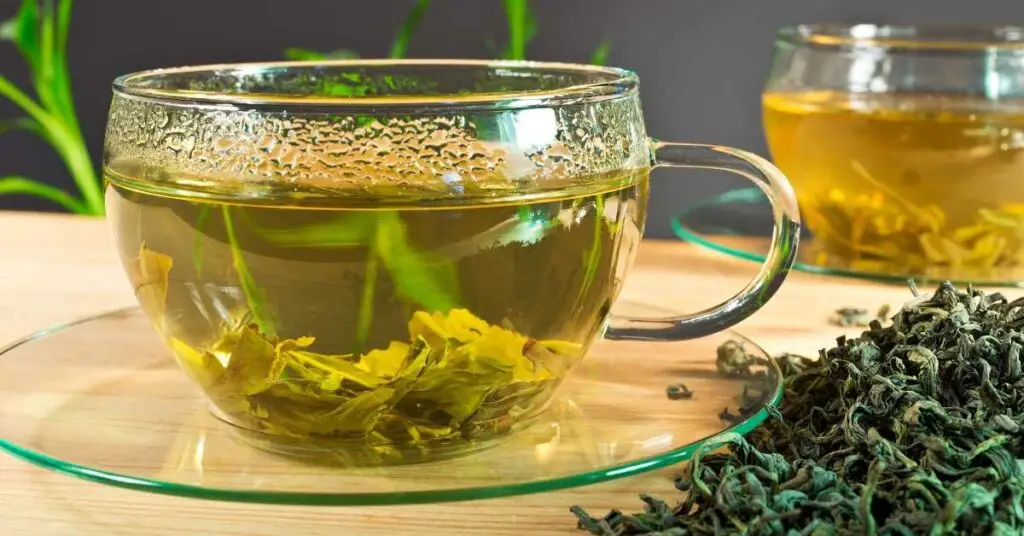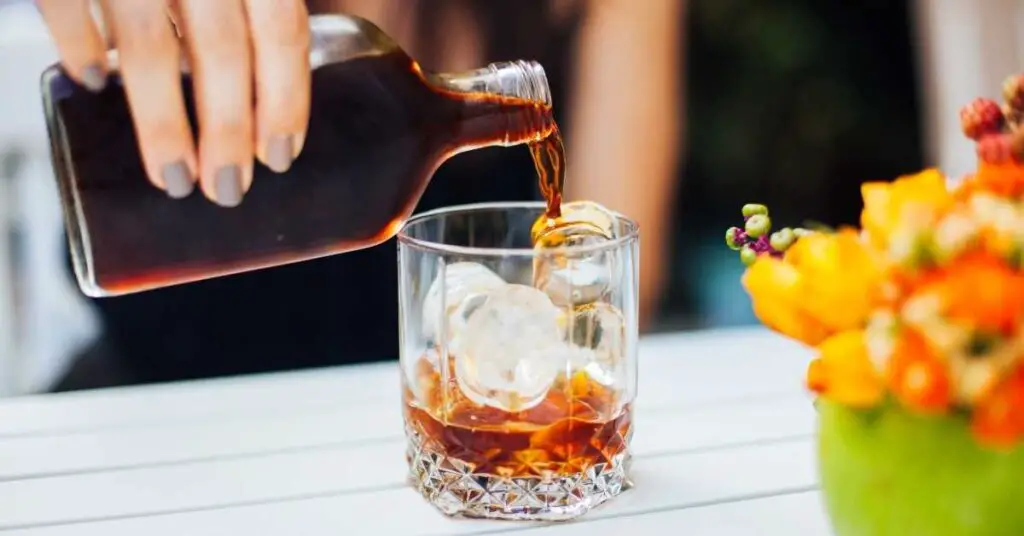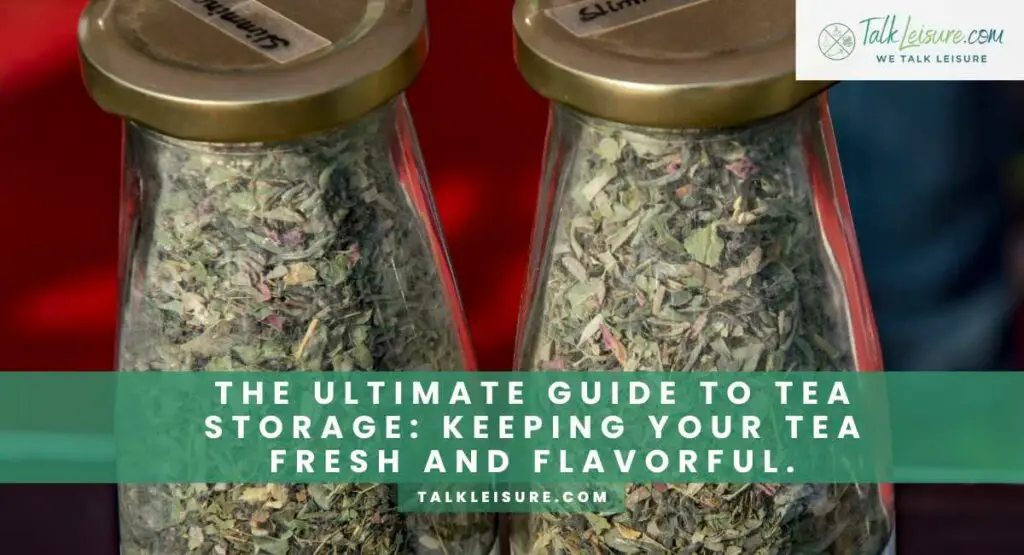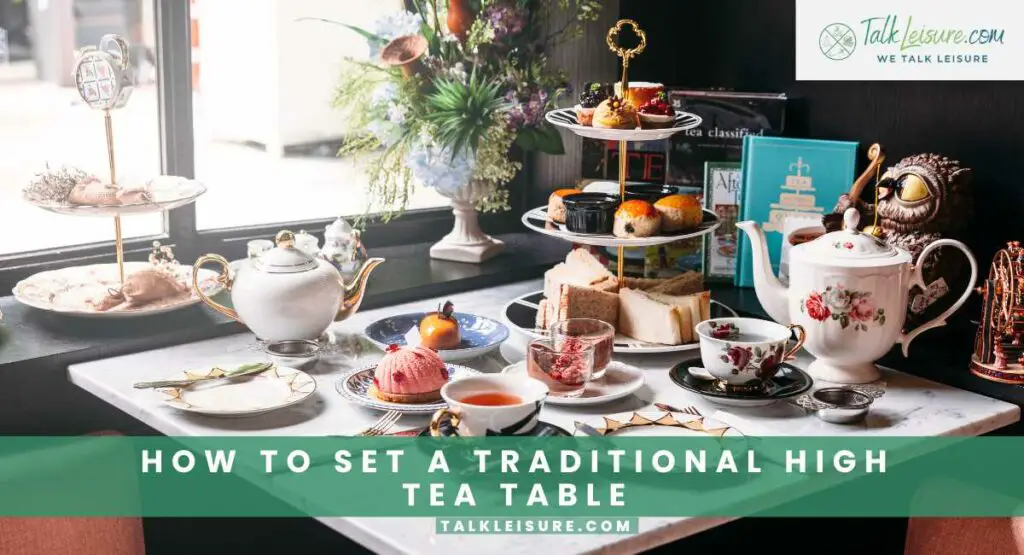Welcome to a world where every sip is an adventure and every cup holds the promise of well-being. In this exploration of herbal teas, we uncover nature’s remedies and delights, one infusion at a time.
From the tropical burst of Hibiscus to the wisdom of Sage, each tea unveils a unique flavor profile and a host of health benefits.
Join us on this aromatic journey as we dive deep into the enchanting world of specific herbal teas, discovering their distinct personalities and the magic they bring to our cups. It’s time to brew, sip, and let nature’s wisdom unfold in every tantalizing sip.
Also read: A guide to the world’s most exquisite tea houses and lounges.
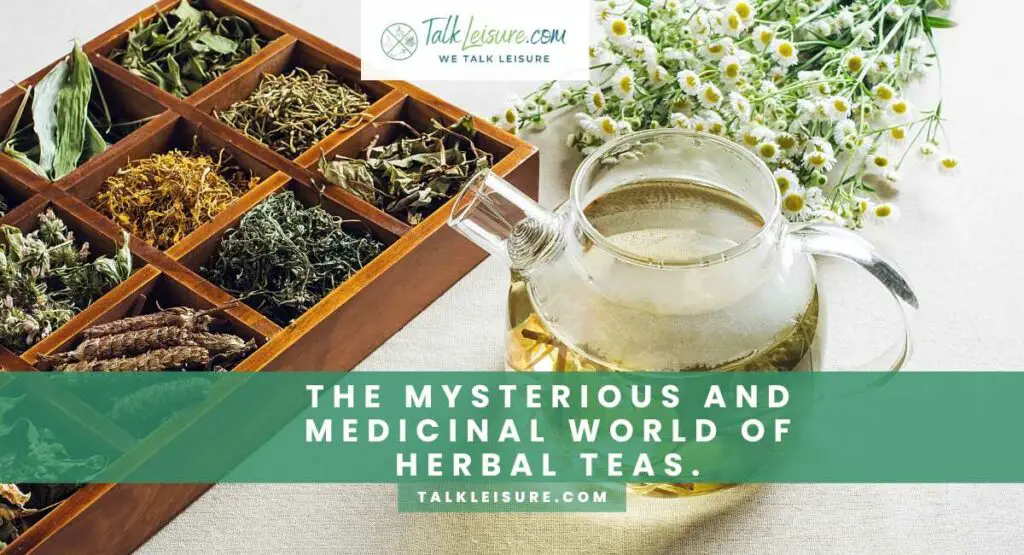
Introduction to Herbal Teas: Sipping History, Culture, and Comfort
Ah, the world of herbal teas! It’s like a warm hug for your insides, isn’t it? Picture this: centuries of wisdom steeped in a humble cup, just waiting to soothe, heal, and transport you to a realm of well-being.
What are Herbal Teas?
So, what exactly are these magical elixirs, you ask? Well, they’re not your run-of-the-mill black or green teas. Nope, these brews are the wild children of the tea family, concocted from an orchestra of herbs, flowers, roots, and spices. It’s like Mother Nature decided to throw a tea party with all her favorite ingredients!
Historical Significance of Herbal Teas
Let’s take a trip back in time, shall we? Ancient civilizations, from the Egyptians to the Chinese, were OG tea enthusiasts. They didn’t just sip these herbal potions for kicks; they believed in the power of plants to mend both body and soul. Imagine Cleopatra swapping out her morning latte for a soothing chamomile infusion. Now that’s a queen with taste!
Cultural Traditions Surrounding Herbal Teas
Fast forward to today, and you’ll find that herbal teas have seeped into cultures worldwide. From the minty Moroccan delights to the Ayurvedic wonders of India, every region has its own secret brew. It’s like a global tea party where everyone’s invited!
Now, here’s a fun fact: in some cultures, herbal teas aren’t just beverages; they’re rituals. It’s like saying, “Hey, universe, let’s have a little heart-to-heart over this cup of rosemary bliss, shall we?”
Popular Herbal Teas and Their Benefits
Alright, tea adventurer, it’s time to embark on a journey through the lush gardens of herbal infusions. These aren’t your average teas – they’re the superheroes of the beverage world, each with its own special power.
Also read: A deep dive into Matcha: History, preparation, and benefits.
Chamomile Tea: The Calming Elixir
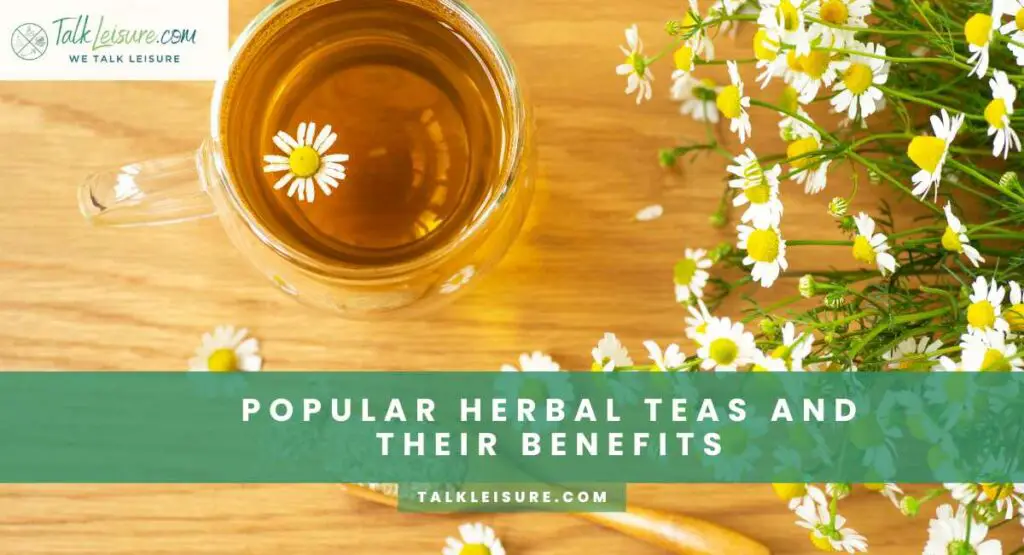
Ah, chamomile, the MVP of bedtime brews. This dainty little flower doesn’t just look pretty; it’s a powerhouse of calm. It’s like a lullaby for your nervous system, gently tucking you in for the night. Trouble sleeping? Chamomile’s got your back!
Peppermint Tea: A Soothing Digestive Aid
Feeling like your stomach is staging a protest? Enter peppermint, the cool, refreshing cavalry. It’s like a spa day for your digestive system. One sip, and suddenly, your tummy is doing a happy dance. Bloating and indigestion—consider yourself evicted!
Lavender Tea: A Relaxing Brew for Stress Relief
Imagine yourself in a field of blooming lavender, a gentle breeze caressing your skin. That’s the serenity that lavender tea brings. It’s like a zen garden in a cup. Stressed out? Take a sip and let the calm wash over you.
Ginger Tea: The Immunity Booster
Ginger is like the superhero that never takes a day off. This spicy root is your bodyguard against colds and flus. It’s got a kick that’ll wake up your senses, and a warmth that’ll wrap you in a cozy hug. Feeling under the weather? Ginger’s on the case!
Echinacea Tea: Nature’s Cold Remedy
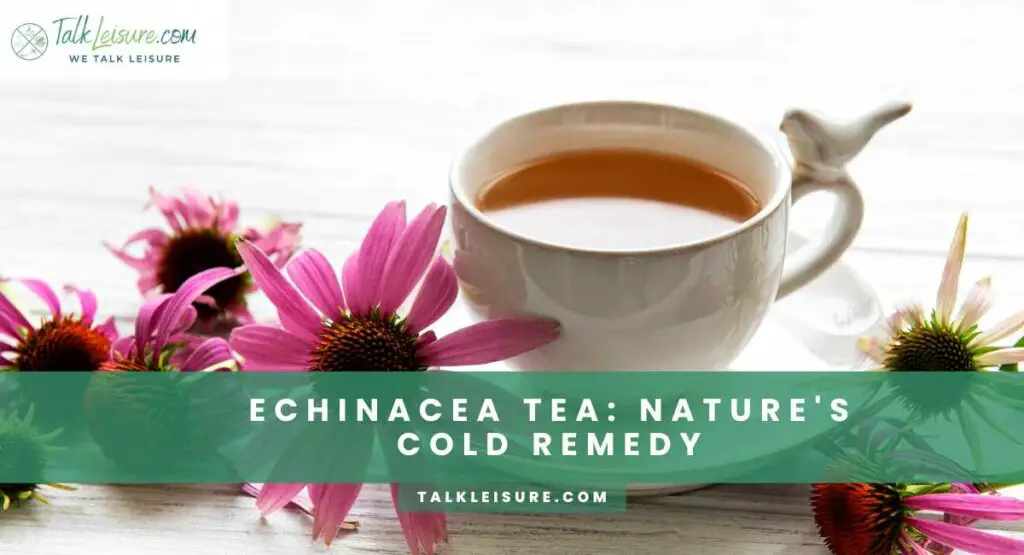
When the sniffles come knocking, echinacea is your knight in shining armor. This purple coneflower has been known for centuries as the ultimate cold-fighting champion. It’s like a fortress for your immune system, standing strong against invaders.
Hibiscus Herbal Tea: The Tropical Elixir
This brew is a burst of tartness and vibrancy, reminiscent of a tropical escape. Its deep red hue is as captivating as its taste. Packed with vitamin C and antioxidants, hibiscus tea acts as a natural defense shield for the body, making it a delightful addition to your daily routine.
Whether enjoyed hot or cold, it’s a perfect thirst quencher on a sunny day, and its tangy notes also make it a wonderful base for creative herbal blends.
Lemongrass Herbal Tea: Zesty Zing for Mind and Body
This tea is clean, citrusy, and incredibly invigorating, like a burst of sunshine in a cup. Its bright aroma is matched by its lively taste. Known for its calming effect on the nervous system, lemongrass tea is like a yoga session for your mind. It aids digestion, eases anxiety, and even supports healthy skin. Steep it for a few minutes and let the zesty goodness infuse your senses. It’s a wonderful standalone tea and also pairs well with other herbs.
Rooibos Herbal Tea: The South African Soother
Now, let’s explore Rooibos Herbal Tea. This smooth, earthy brew is slightly sweet, like a warm hug from the African savannah. Its amber color is as inviting as its taste. Rooibos is a caffeine-free powerhouse of antioxidants and minerals, supporting heart health, aiding digestion, and being gentle on the nervous system. Enjoy it on its own or with a splash of milk and honey for a comforting treat. It’s versatile and can be used as a base for various herbal infusions.
Sage Tea: Wisdom in a Cup
In our exploration of specific herbal teas, we came across Sage Tea. This savory, aromatic infusion is like a conversation with an ancient sage. Its robust flavor mirrors its rich history of medicinal use. Sage tea supports cognitive function, aids digestion, and even contributes to oral health.
Enjoyed in moderation, its strong flavor makes it a perfect addition to culinary dishes as well. Sage tea is a testament to the wisdom that nature offers in every leaf.
Rose Hip Tea: The Floral Elixir
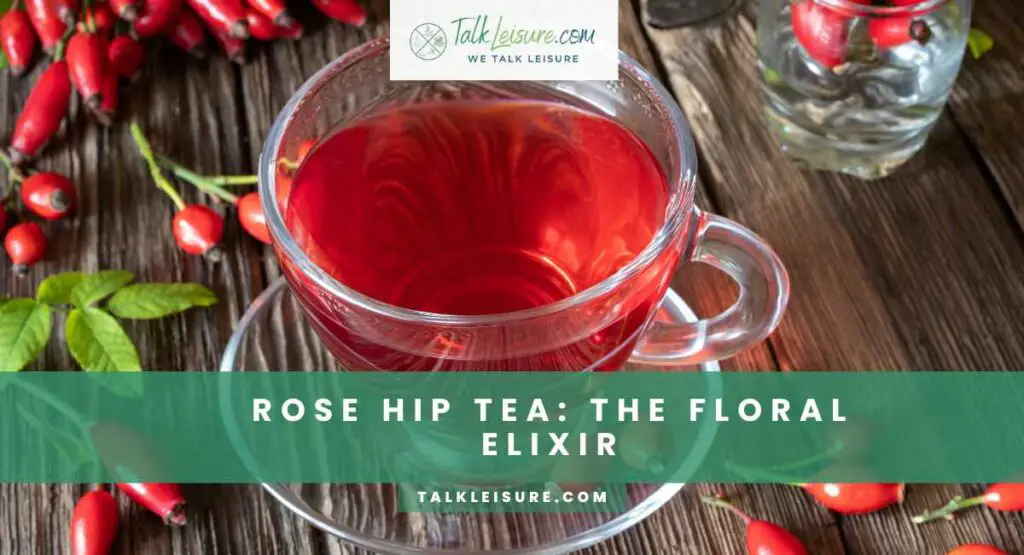
Lastly, we venture into the realm of Rose Hip Tea. This fruity, tangy, and delicately floral brew is like a stroll through a blooming rose garden. Its sweet-tart taste is a testament to its natural goodness. Loaded with vitamin C and antioxidants, rose hip tea acts as a beauty treatment from the inside out.
It supports skin health, boosts immunity, and aids digestion. Steep it for a few minutes and let the floral notes dance on your palate. It’s a lovely standalone tea and can be mixed with other herbs for delightful blends. Rose Hip Tea is an ode to the beauty and vitality that nature generously provides.
So, dear reader, these herbal teas aren’t just delicious; they’re your allies in the quest for a healthier, happier you. Whether you’re sipping for relaxation or warding off a pesky cold, these herbal heroes have got you covered!
Stay tuned for the next section, where we’ll dive into the fascinating world of harvesting and preparing these magical herbs!
Harvesting and Preparation: Crafting the Perfect Cup of Herbal Bliss
Alright, fellow tea enthusiasts, it’s time to don our imaginary gardening gloves and get our hands dirty (figuratively, of course). Let’s unravel the secrets of sourcing, drying, and blending these magical herbs for the ultimate tea experience.
Sourcing Quality Herbs for Tea
Think of sourcing herbs like selecting the finest ingredients for a gourmet meal. You want the best of the best. Look for trusted suppliers or, if you’re feeling adventurous, consider growing your own herbal garden. There’s something quite magical about plucking your own chamomile under the morning sun!
Drying and Storing Herbs
Once you’ve gathered your bounty, it’s time to give them a spa day of their own. Drying herbs is an art. You want to preserve their flavors and medicinal properties, not zap them into oblivion. Air-drying, dehydrating, or even good ol’ fashioned hanging—choose your method and let the transformation begin.
Blending Herbal Teas for Optimal Flavor and Medicinal Benefits
Now comes the fun part: playing tea alchemist. This is where you get to channel your inner potion master. Mix and match herbs to create your own signature blends. Feeling bold? Throw in some unexpected ingredients for a unique twist. Remember, there are no rules in the world of herbal teas, only delicious discoveries.
Remember, every cup of herbal tea is a testament to nature’s bounty and your own creativity. So, experiment, explore, and let your taste buds lead the way!
Stay tuned for the next section, where we’ll dive into the fascinating science behind these herbal concoctions. Get ready to uncover the magic happening inside your teacup!
The Science Behind Herbal Teas: Nature’s Healing Chemistry
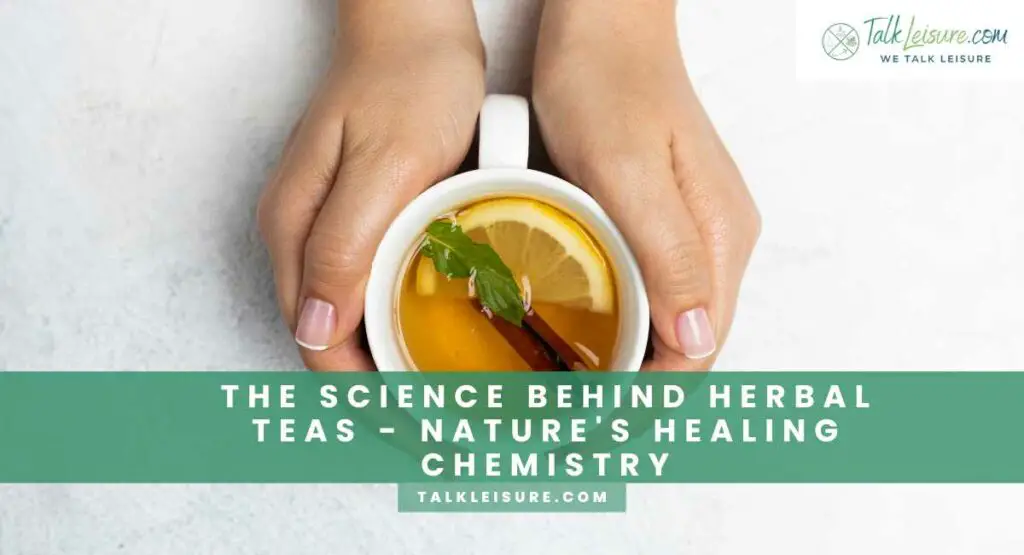
Alright, tea enthusiasts, it’s time to don our lab coats and delve into the fascinating world of herbal tea chemistry. Brace yourselves for a journey through the active compounds that make these brews not just flavorful but wonderfully medicinal.
Active Compounds in Herbal Teas
Think of herbal teas as Mother Nature’s pharmacy, stocked with a diverse array of active compounds. From flavonoids to terpenes, each herb brings its own unique chemical arsenal to the table. These compounds are the unsung heroes behind the health benefits of your favorite brews.
How Herbal Teas Interact with the Body
Now, let’s talk about the dance between these compounds and your body. When you take that first sip of, say, chamomile tea, it’s like inviting a whole team of soothing agents to set up camp in your system. They interact with receptors, enzymes, and cells, working their magic to bring about relaxation, digestion, or immunity boosts—whatever your cup of tea is!
Studies and Research on the Medicinal Properties of Herbal Teas
But wait, this isn’t just folklore and old wives’ tales. Science has its eyes on herbal teas, too! Researchers around the globe are conducting studies to unravel the precise mechanisms and benefits of these brews. From university labs to herbalist sanctuaries, the quest for knowledge about these leafy elixirs is alive and thriving.
So, next time you’re sipping on a cup of herbal tea, know that you’re not just indulging in a comforting ritual, you’re engaging in a beautifully intricate biochemical symphony.
In the next section, we’ll master the art of brewing these teas to perfection. Get ready to elevate your tea game to a whole new level!
Brewing Techniques and Tips for Herbal Tea: Elevate Your Tea Game!
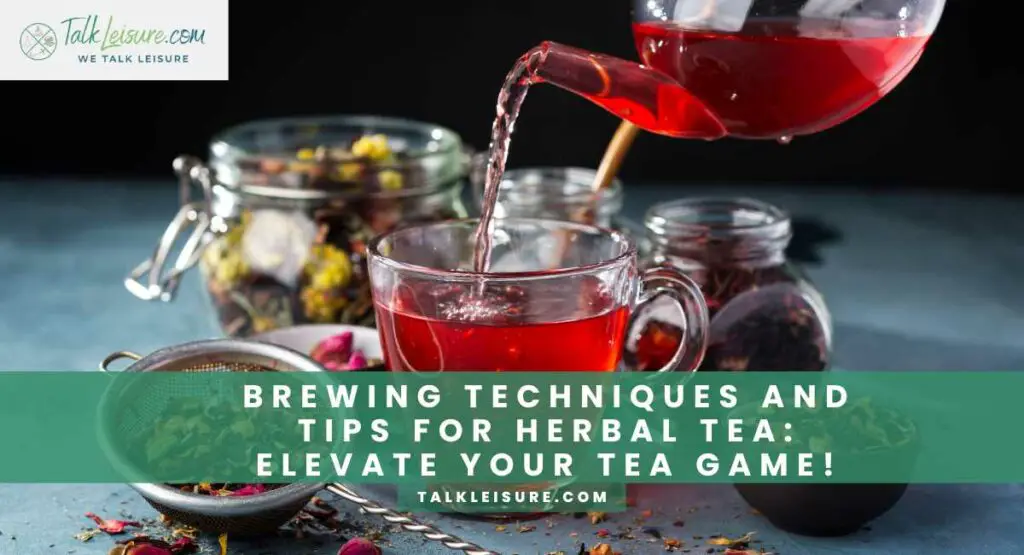
Alright, fellow tea aficionados, it’s time to transform from mere tea drinkers to true tea connoisseurs. Let’s dive into the art of brewing herbal teas to perfection!
Water Temperature and Steeping Times of Herbal Tea
First things first, let’s talk about water temperature. Herbal teas, being the delicate darlings they are, require a slightly different approach than their black or green counterparts. Boiling water might be great for a robust black tea, but for these delicate herbs, we want to show a bit more finesse.
- Gentle Heat: Bring your water to a gentle simmer, around 200°F (93°C). This allows the herbs to release their flavors and medicinal properties without scalding them.
- Patience is a virtue. Steeping times can vary depending on the herb. For instance, a light herb like chamomile might only need 5-7 minutes, while a heartier one like ginger could go up to 10-15 minutes. Experimentation is key!
Infusion Methods: Loose Leaf vs. Tea Bags of Herbal Tea
Now, the age-old debate: loose leaf or tea bags? It’s like choosing between a tailored suit and off-the-rack attire. Both have their merits, but when it comes to herbal teas, there’s a subtle difference.
- Loose Leaf Luxury: Using loose herbs allows them to unfurl and infuse freely, giving you a fuller, more nuanced flavor profile. It’s like giving the herbs a red carpet to perform their magic.
- Tea Bags: The Convenience Crew: Tea bags are like the on-the-go option. They’re convenient, quick, and perfect for when you’re in a rush. Just make sure you opt for quality bags that allow the herbs to breathe.
Sweeteners and Enhancements for Herbal Teas
To sweeten or not to sweeten, that is the question! Herbal teas have a natural sweetness to them, but sometimes, a little enhancement can take them to the next level.
- Nature’s Candy: Try natural sweeteners like honey, maple syrup, or stevia for a touch of sweetness without the guilt. They complement the herbs without overpowering them.
- Citrus Zest and Spices: A twist of lemon or a sprinkle of cinnamon can be like the final flourish on a masterpiece. They add depth and a zesty kick to your brew.
Remember, it’s all about personal preference. Feel free to play tea chemist and experiment with different combinations until you find your perfect cup.
In the next Section, we’ll explore the specific ailments that herbal teas can address. Get ready for a journey through the soothing wonders of nature’s remedies!
Herbal Teas for Common Ailments – Nature’s Remedies in a Cup
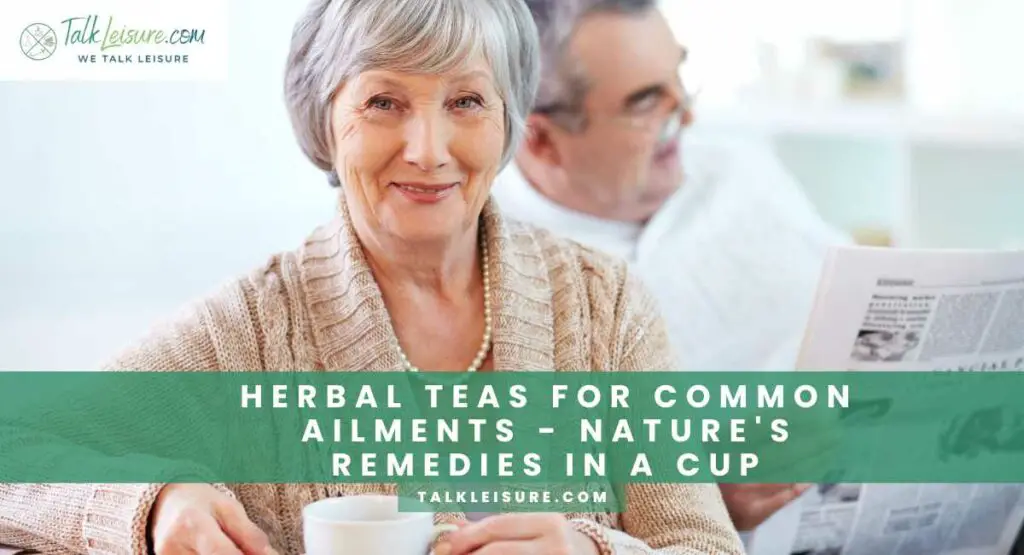
Alright, health seekers, it’s time to tap into the incredible healing powers of herbal teas. From soothing upset stomachs to calming anxious minds, these brews have been nature’s remedy cabinet for centuries.
Digestive Disorders and Herbal Remedies
Peppermint Tea: When your stomach is staging a revolt, peppermint is your ally. It soothes spasms and eases digestion. It’s like sending in a squad of calm-inducing troops to restore order in your belly.
Ginger Tea: Ginger is like a superhero for your digestive system. It tackles nausea, bloating, and even motion sickness. It’s like a fiery defender, warding off tummy troubles.
Stress, Anxiety, and Herbal Infusions
Chamomile Tea: If stress had a mortal enemy, it would be chamomile. This gentle giant calms the nervous system, promoting relaxation and easing anxiety. It’s like a warm embrace, telling your worries it’s time for a vacation.
Lavender Tea: Picture a lavender field at sunset – that’s the kind of tranquility lavender tea brings. It eases tension, relaxes muscles, and helps you find your center. It’s like a spa day for your mind.
Sleep Disorders and Relaxing Herbal Blends
Valerian Root Tea: When counting sheep just isn’t cutting it, valerian root steps in. It’s like a lullaby in a cup, helping you drift into a restful slumber.
Passionflower Tea: This delicate flower is a natural sedative. It calms racing thoughts and invites peaceful dreams. It’s like tucking your mind in with a soft, cozy blanket.
Remember, while these herbal teas can be wonderfully effective, they’re not a replacement for professional medical advice. Always consult with a healthcare provider for serious health concerns.
In the next Section, we’ll explore how herbal teas can be incorporated into your daily wellness routine. Get ready to turn your tea time into a mindful self-care ritual!
Incorporating Herbal Teas into Daily Wellness Routines: A Ritual of Self-Care
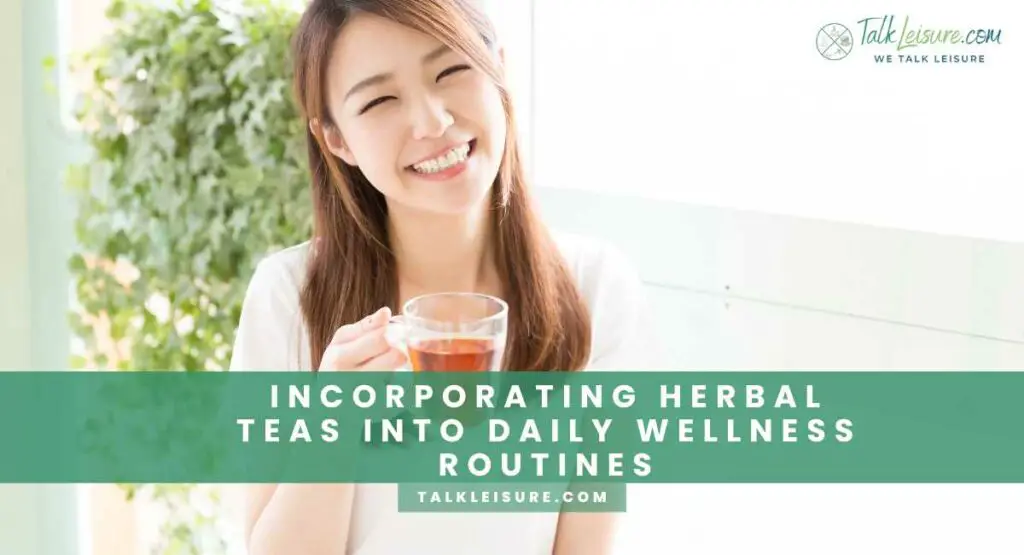
Alright, dear tea enthusiasts, it’s time to elevate your daily routine with the gentle touch of herbal teas. These brews aren’t just beverages; they’re opportunities for self-care and moments of mindfulness.
Morning Rituals with Energizing Teas
Green Tea: Kickstart your day with the gentle buzz of green tea. It’s like a morning jog for your brain, providing a clean, focused energy that lasts.
Ginseng Tea: Need an extra boost? Ginseng tea is your wingman. It’s like a motivational speaker in a cup, giving you the vitality to conquer the day.
Mint Tea: For a refreshing start, mint tea is your go-to. It’s like a splash of cold water on a hot summer day, awakening your senses and clearing the mental fog.
Evening Wind-Down and Relaxation Teas
Chamomile and Lavender Blend: Combine the calming powers of chamomile and lavender for the ultimate pre-sleep elixir. It’s like a lullaby that gently guides you into the land of dreams.
Valerian and Lemon Balm Fusion: When it’s time to unwind, this combination is your ticket to serenity. It’s like a warm, comforting hug that whispers, “It’s time to relax.”
Passionflower and Chamomile Infusion: This duo is like a duo of relaxation ninjas. They team up to ease tension and promote a sense of calm, preparing you for a restful night’s sleep.
Customizing Herbal Tea Blends for Personal Needs
Do your herbalist hat and get creative! Mix and match herbs to suit your unique needs and preferences. Feeling a bit low on energy? Add a pinch of ginseng to your morning brew. Need a mental boost? Try a blend of rosemary and sage. The possibilities are endless, and your palate is the canvas!
Remember, these moments with your herbal tea are more than just hydration. They’re an invitation to be present, to care for yourself, and to savor the simple pleasures of life.
In the next section, we’ll explore the cautions and considerations when it comes to enjoying herbal teas. After all, even nature’s remedies should be savored responsibly!
Cautions and Considerations: Sipping Safely and Mindfully

Alright, tea enthusiasts, as much as we love our herbal brews, it’s important to approach them with a touch of wisdom and a sprinkle of caution. Let’s explore some key considerations to ensure your tea-drinking journey is one of delight and wellness.
Potential Allergies and Side Effects
Just like with any powerful elixir, some herbs might not agree with everyone. It’s wise to be aware of potential allergies or sensitivities. For example, if you have a ragweed allergy, chamomile might not be your best friend. Always start with a small quantity and observe how your body reacts.
Interaction with Medications
Teas are like botanical powerhouses, and they can interact with medications you might be taking. Some herbs might enhance or counteract the effects of certain medications. If you’re on any prescribed drugs, it’s a good idea to consult with your healthcare provider before introducing new herbal teas into your routine.
Consulting a Healthcare Professional
While herbal teas can be wonderfully beneficial, they’re not a one-size-fits-all solution. If you have specific health concerns or chronic conditions, it’s always best to seek the guidance of a healthcare professional. They can provide personalized advice and ensure that the herbs you choose are safe and suitable for your unique situation.
Remember, the goal is to sip your way to better health, not to stumble into any unintended side effects. With a dash of mindfulness and a sprinkle of expert advice, you can enjoy your herbal teas with confidence.
In the next Section, we’ll take a deep dive into some lesser-known and exotic herbs for tea, opening up a world of new flavors and potential health benefits. Get ready to broaden your herbal horizons!
Exploring Uncommon Herbs for Tea – Hidden Gems in Your Cup
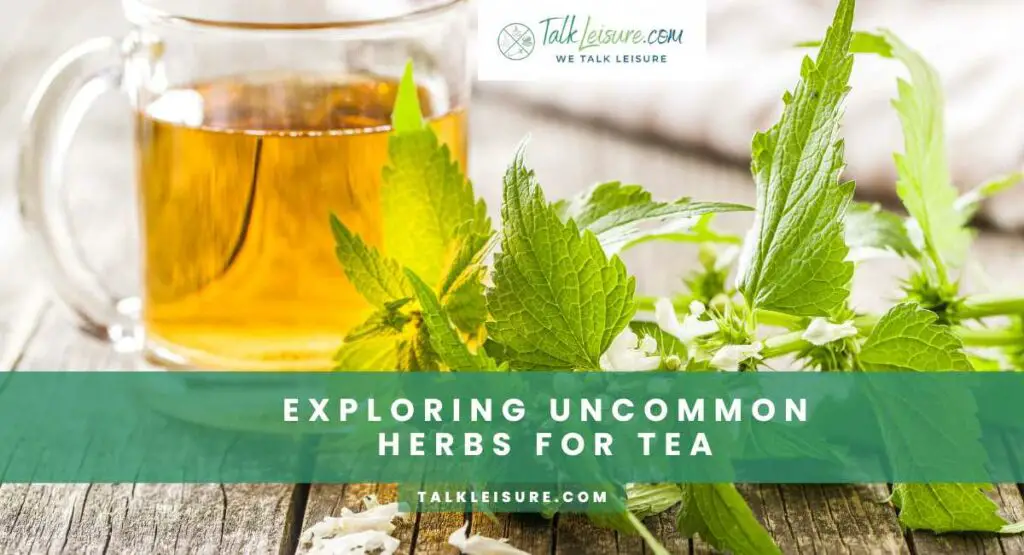
Alright, adventurous tea explorers, it’s time to venture off the beaten path and discover the lesser-known, exotic herbs that can turn your teacup into a treasure trove of unique flavors and potential health benefits.
Lesser-Known Medicinal Herbs
Nettle Leaf:
Don’t let its sting scare you away! When dried and brewed, nettle leaf transforms into a powerhouse of nutrients. It’s like a multivitamin in a cup, supporting everything from digestion to immune function.
Dandelion Root:
That’s right, the weed in your backyard can actually be your ally. Dandelion root tea is like a detox for your liver and kidneys. It supports their natural cleansing processes and promotes overall well-being.
Lemon Balm:
This lemon-scented herb is like a mood-lifter in a cup. It’s known for its calming properties and can help ease anxiety and promote a sense of tranquility. It’s like a little burst of sunshine for your soul.
Indigenous and Exotic Tea Varieties
Yerba Mate:
Straight from South America, yerba mate is like a natural energy shot. It provides a clean, sustained energy boost without the jitters or crashes. It’s like the secret weapon of the Amazonian rainforest.
Rooibos:
Hailing from South Africa, rooibos is like a warm hug for your taste buds. It’s naturally caffeine-free and packed with antioxidants. It’s like a spa day for your palate.
Hibiscus Flower:
Vibrant and tart, hibiscus tea is like a tropical vacation in a cup. It’s loaded with vitamin C and antioxidants, making it a powerhouse for immune support. Plus, its beautiful crimson hue is a feast for the eyes.
Embrace these hidden gems, and let your tea journey take you to new and exciting flavor territories. Who knows, you might just discover your new favorite brew!
In the next Section, we’ll explore how herbal teas can be infused into cooking and baking, unlocking a whole new dimension of culinary creativity. Get ready to tantalize your taste buds!
Culinary Uses of Herbal Teas – Infusing Flavor and Health into Every Dish
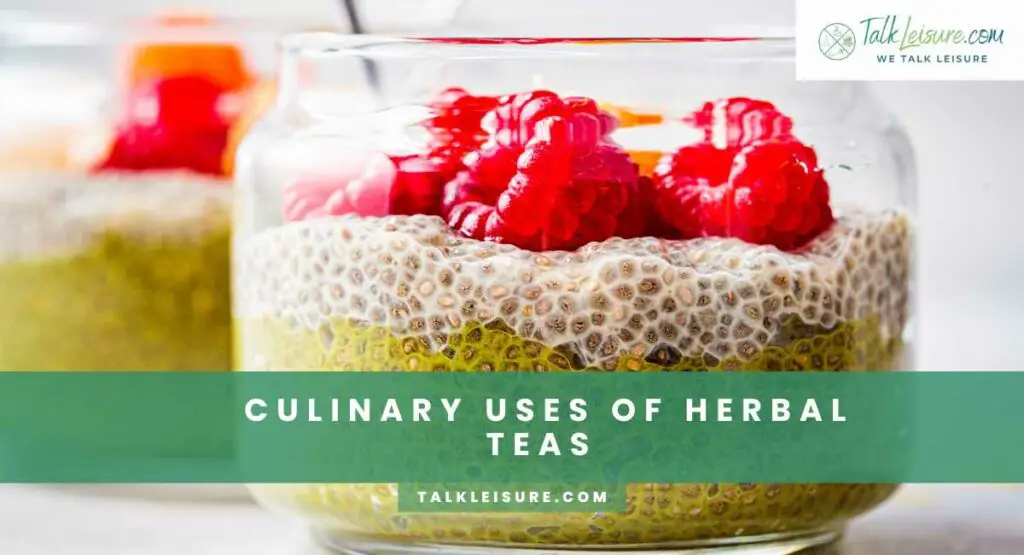
Alright, culinary adventurers, it’s time to don your aprons and step into the kitchen. Herbal teas aren’t just for sipping; they’re secret ingredients that can elevate your dishes from ordinary to extraordinary.
Infusing Teas in Cooking and Baking
Herbal Tea-Infused Broths
Turn an ordinary broth into a flavor-packed masterpiece by infusing it with herbs like rosemary, thyme, or sage. It’s like giving your soups and stews a gourmet twist.
Tea-Infused Marinades
Swap out your regular marinade with a tea-infused concoction. Black tea with citrus zest makes for a zingy chicken marinade, while green tea with ginger adds depth to grilled fish. It’s like a flavor explosion for your taste buds.
Herbal Tea Reductions
Reduce brewed herbal tea down to a syrupy consistency, and drizzle it over desserts or use it as a glaze for meats. Imagine a lavender-infused reduction gracing your favorite dessert – it’s like a touch of culinary magic.
Creating Herbal Tea-Infused Beverages
Iced Tea Elixirs
Elevate your iced tea game by blending herbal infusions with fresh fruits and herbs. A mint and lemon balm iced tea with slices of juicy peaches? It’s like summer in a glass.
Tea-infused cocktails and Mocktails
Play mixologist and craft inventive cocktails or alcohol-free mocktails with herbal tea infusions. A chamomile and elderflower gin cocktail? It’s like a garden party in your glass.
Tea-Infused Desserts
Take your desserts to the next level by incorporating herbal teas. Earl Grey-infused custard, lavender-infused shortbread cookies – it’s like a dessert symphony where tea takes center stage.
The possibilities are as endless as your imagination. With herbal teas, your culinary creations are limited only by the bounds of your creativity. So, head to the kitchen and let the herbal tea alchemy begin!
Conclusion
As our aromatic journey through the world of herbal teas comes to a close, we’re reminded that every sip is a communion with nature’s wisdom. From the tropical tang of Hibiscus to the robust embrace of Sage, each infusion offers a unique experience.
These teas aren’t just beverages; they’re gifts from the earth, brimming with flavors and healthful properties. So, as you brew your next cup, remember the centuries of wisdom and the healing power that rests in every leaf and petal. Here’s to the simple yet profound pleasure of tea, a reminder that nature’s best remedies often start with a humble leaf. Cheers to well-being, one soothing sip at a time.
Frequently Asked Questions
- What is Leung cha?
Leung Cha, also known as herbal tea, is a traditional Chinese beverage made from various dried herbs, flowers, and roots. It’s known for its medicinal properties and is often used for its health benefits. The blend can include a wide range of ingredients, each chosen for its specific properties, creating a flavorful and therapeutic concoction.
- Which tea has the most antioxidants?
Green tea is renowned for having the highest concentration of antioxidants among commonly consumed teas. It’s particularly rich in catechins, a type of antioxidant that has been extensively studied for its potential health benefits, including reducing the risk of chronic diseases and promoting overall well-being. Matcha, a type of powdered green tea, is especially high in antioxidants due to the way it’s prepared and consumed.
- What is the healthiest tea to drink in the morning?
The healthiest tea to drink in the morning largely depends on personal preferences and health goals. However, green tea is often considered an excellent choice due to its high levels of antioxidants, particularly catechins, which may offer numerous health benefits. Additionally, black tea, oolong tea, and white tea are all good options. Herbal teas like peppermint or ginger can also be invigorating and provide health benefits. Ultimately, choosing a tea that aligns with your taste preferences and supports your individual health needs is the best approach.

